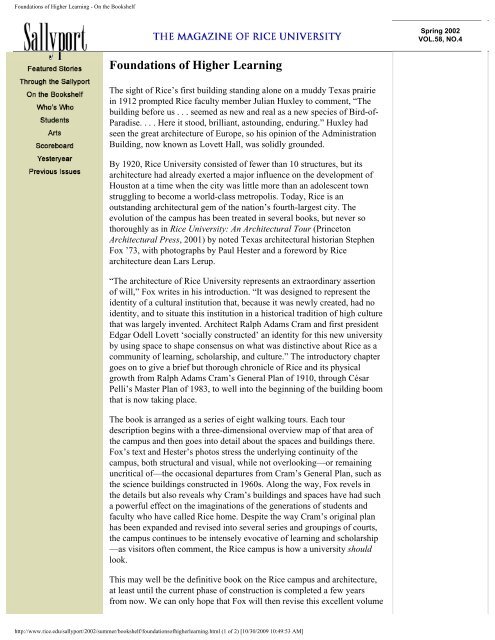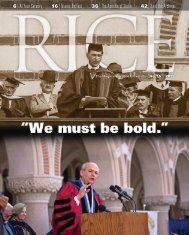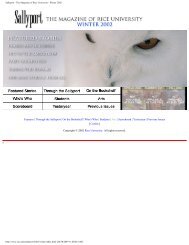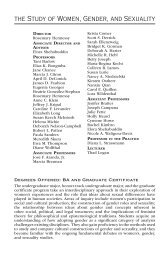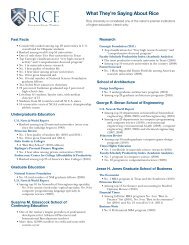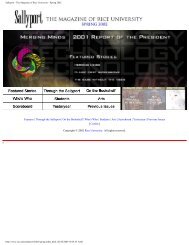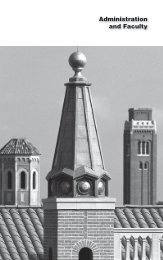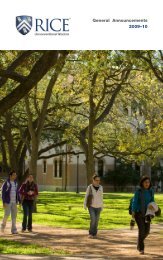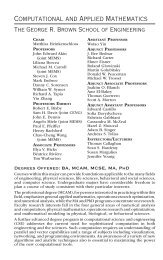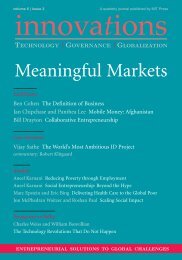Sallyport - The Magazine of Rice University - Summer 2002
Sallyport - The Magazine of Rice University - Summer 2002
Sallyport - The Magazine of Rice University - Summer 2002
Create successful ePaper yourself
Turn your PDF publications into a flip-book with our unique Google optimized e-Paper software.
Foundations <strong>of</strong> Higher Learning - On the Bookshelf<br />
Spring <strong>2002</strong><br />
VOL.58, NO.4<br />
Foundations <strong>of</strong> Higher Learning<br />
<strong>The</strong> sight <strong>of</strong> <strong>Rice</strong>’s first building standing alone on a muddy Texas prairie<br />
in 1912 prompted <strong>Rice</strong> faculty member Julian Huxley to comment, “<strong>The</strong><br />
building before us . . . seemed as new and real as a new species <strong>of</strong> Bird-<strong>of</strong>-<br />
Paradise. . . . Here it stood, brilliant, astounding, enduring.” Huxley had<br />
seen the great architecture <strong>of</strong> Europe, so his opinion <strong>of</strong> the Administration<br />
Building, now known as Lovett Hall, was solidly grounded.<br />
By 1920, <strong>Rice</strong> <strong>University</strong> consisted <strong>of</strong> fewer than 10 structures, but its<br />
architecture had already exerted a major influence on the development <strong>of</strong><br />
Houston at a time when the city was little more than an adolescent town<br />
struggling to become a world-class metropolis. Today, <strong>Rice</strong> is an<br />
outstanding architectural gem <strong>of</strong> the nation’s fourth-largest city. <strong>The</strong><br />
evolution <strong>of</strong> the campus has been treated in several books, but never so<br />
thoroughly as in <strong>Rice</strong> <strong>University</strong>: An Architectural Tour (Princeton<br />
Architectural Press, 2001) by noted Texas architectural historian Stephen<br />
Fox ’73, with photographs by Paul Hester and a foreword by <strong>Rice</strong><br />
architecture dean Lars Lerup.<br />
“<strong>The</strong> architecture <strong>of</strong> <strong>Rice</strong> <strong>University</strong> represents an extraordinary assertion<br />
<strong>of</strong> will,” Fox writes in his introduction. “It was designed to represent the<br />
identity <strong>of</strong> a cultural institution that, because it was newly created, had no<br />
identity, and to situate this institution in a historical tradition <strong>of</strong> high culture<br />
that was largely invented. Architect Ralph Adams Cram and first president<br />
Edgar Odell Lovett ‘socially constructed’ an identity for this new university<br />
by using space to shape consensus on what was distinctive about <strong>Rice</strong> as a<br />
community <strong>of</strong> learning, scholarship, and culture.” <strong>The</strong> introductory chapter<br />
goes on to give a brief but thorough chronicle <strong>of</strong> <strong>Rice</strong> and its physical<br />
growth from Ralph Adams Cram’s General Plan <strong>of</strong> 1910, through César<br />
Pelli’s Master Plan <strong>of</strong> 1983, to well into the beginning <strong>of</strong> the building boom<br />
that is now taking place.<br />
<strong>The</strong> book is arranged as a series <strong>of</strong> eight walking tours. Each tour<br />
description begins with a three-dimensional overview map <strong>of</strong> that area <strong>of</strong><br />
the campus and then goes into detail about the spaces and buildings there.<br />
Fox’s text and Hester’s photos stress the underlying continuity <strong>of</strong> the<br />
campus, both structural and visual, while not overlooking—or remaining<br />
uncritical <strong>of</strong>—the occasional departures from Cram’s General Plan, such as<br />
the science buildings constructed in 1960s. Along the way, Fox revels in<br />
the details but also reveals why Cram’s buildings and spaces have had such<br />
a powerful effect on the imaginations <strong>of</strong> the generations <strong>of</strong> students and<br />
faculty who have called <strong>Rice</strong> home. Despite the way Cram’s original plan<br />
has been expanded and revised into several series and groupings <strong>of</strong> courts,<br />
the campus continues to be intensely evocative <strong>of</strong> learning and scholarship<br />
—as visitors <strong>of</strong>ten comment, the <strong>Rice</strong> campus is how a university should<br />
look.<br />
This may well be the definitive book on the <strong>Rice</strong> campus and architecture,<br />
at least until the current phase <strong>of</strong> construction is completed a few years<br />
from now. We can only hope that Fox will then revise this excellent volume<br />
http://www.rice.edu/sallyport/<strong>2002</strong>/summer/bookshelf/foundations<strong>of</strong>higherlearning.html (1 <strong>of</strong> 2) [10/30/2009 10:49:53 AM]


